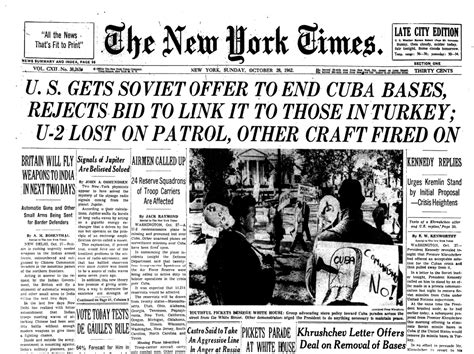
Mark Cuban proposes two straightforward solutions to address what he sees as critical issues facing the United States: streamlining the permitting process for businesses and implementing term limits for Supreme Court justices.
Billionaire entrepreneur Mark Cuban believes the United States is facing challenges that, while significant, can be addressed with practical, common-sense solutions. In a recent interview, Cuban outlined two key areas where he believes immediate action can lead to substantial improvements: regulatory burdens on businesses and the structure of the Supreme Court. His proposals, focusing on efficiency and accountability, offer a perspective on how to foster economic growth and restore faith in governmental institutions. Cuban emphasized the need for simplifying the permitting process for businesses and imposing term limits on Supreme Court justices, arguing that these changes would lead to a more dynamic economy and a more responsive judiciary.
Streamlining the Permitting Process
Cuban’s first proposal targets the cumbersome and often lengthy permitting processes that businesses, particularly startups and small enterprises, face when trying to launch or expand their operations. He argues that these bureaucratic hurdles stifle innovation, delay job creation, and ultimately hinder economic growth.
“We’re going to become an even more bureaucratic nightmare when it comes to getting anything permitted,” Cuban warned. He believes that the current system, characterized by layers of approvals, conflicting regulations, and unpredictable timelines, creates unnecessary barriers for entrepreneurs and investors.
Cuban’s vision involves a comprehensive overhaul of the permitting process, aiming to make it more transparent, efficient, and predictable. He suggests the implementation of clear and consistent guidelines, the establishment of online portals for submitting applications and tracking their progress, and the adoption of standardized review procedures.
By reducing the time and cost associated with obtaining permits, Cuban believes that the United States can unlock a wave of entrepreneurial activity, fostering innovation, creating jobs, and driving economic growth. He points to examples of countries that have successfully streamlined their regulatory processes, attracting investment and boosting their economies.
Cuban also emphasizes the importance of empowering local communities to make decisions about development projects, while ensuring that environmental and social safeguards are maintained. He suggests the creation of local permitting boards, composed of representatives from the business community, environmental groups, and local residents, to review applications and make recommendations to government agencies.
Furthermore, Cuban calls for greater collaboration between government agencies at the federal, state, and local levels, to ensure that permitting processes are aligned and coordinated. He suggests the establishment of interagency task forces to address specific permitting challenges, and the creation of a national database of permitting requirements and best practices.
The benefits of streamlining the permitting process extend beyond the business community. By reducing delays and costs, it can also facilitate the development of affordable housing, renewable energy projects, and critical infrastructure, contributing to a more sustainable and equitable economy.
Term Limits for Supreme Court Justices
Cuban’s second proposal addresses the issue of lifetime appointments for Supreme Court justices. He argues that the current system, which allows justices to serve for decades, creates an imbalance of power, politicizes the judiciary, and undermines public confidence in the court.
“I think there should be term limits for Supreme Court justices,” Cuban stated. He believes that imposing term limits would make the court more accountable to the people, reduce the influence of political considerations on judicial decisions, and ensure that the court remains responsive to evolving social norms and values.
Cuban suggests a term limit of 18 years for Supreme Court justices, with appointments staggered so that a new justice is appointed every two years. This would ensure that each president has the opportunity to nominate two justices during their term, while preventing any single president from packing the court with ideologically aligned judges.
The implementation of term limits would also create opportunities for new voices and perspectives to be represented on the court, fostering intellectual diversity and ensuring that the court’s decisions reflect the values and priorities of a changing society.
Cuban acknowledges that implementing term limits for Supreme Court justices would require a constitutional amendment, which is a challenging and time-consuming process. However, he believes that the benefits of term limits outweigh the difficulties, and that the American people are ready for a change.
He points to the fact that many other countries have term limits for their highest court judges, and that the United States is an outlier in this regard. He also argues that the current system of lifetime appointments is inconsistent with the principles of democracy and accountability.
Cuban’s proposal has sparked a debate among legal scholars and political commentators, with some arguing that term limits would undermine the independence of the judiciary, while others contend that they would make the court more accountable and responsive to the people.
Underlying Concerns
Cuban’s proposals reflect a broader concern about the state of American society and the challenges facing the country. He believes that the United States is at a critical juncture, and that bold and innovative solutions are needed to address the problems of economic inequality, political polarization, and declining public trust in institutions.
He is particularly concerned about the impact of technology on society, and the need for government to adapt to the challenges and opportunities presented by the digital age. He believes that the United States needs to invest more in education, infrastructure, and research and development, to maintain its competitive edge in the global economy.
Cuban also emphasizes the importance of civic engagement and political participation, urging Americans to become more informed about the issues facing the country and to hold their elected officials accountable. He believes that the future of the United States depends on the willingness of its citizens to work together to solve the challenges facing the nation.
Addressing Bureaucracy and Gridlock
Cuban’s suggestions directly address two significant impediments to American progress: bureaucratic inefficiency and political gridlock. The first, streamlining the permitting process, aims to unleash economic potential by removing unnecessary regulatory hurdles. The second, implementing term limits for Supreme Court justices, seeks to reduce the politicization of the judiciary and promote a more balanced and representative court.
Bureaucratic inefficiencies often manifest as complex, time-consuming procedures that discourage entrepreneurship and investment. These processes can be particularly burdensome for small businesses and startups, which may lack the resources to navigate the regulatory landscape. By simplifying and expediting the permitting process, Cuban believes that the government can create a more level playing field for businesses of all sizes, fostering innovation and economic growth.
Political gridlock, particularly within the Supreme Court, has become an increasingly contentious issue in recent years. The appointment of justices has become highly politicized, with each nomination sparking intense partisan battles. Lifetime appointments exacerbate this problem, as justices can serve for decades, shaping the law and influencing public policy long after the president who appointed them has left office. By implementing term limits, Cuban hopes to reduce the political stakes of Supreme Court appointments and promote a more balanced and representative court that is more responsive to the evolving needs and values of society.
Potential Challenges and Criticisms
While Cuban’s proposals have generated considerable interest and support, they also face potential challenges and criticisms.
Streamlining the permitting process could raise concerns about environmental protection and public safety. Critics might argue that reducing regulatory oversight could lead to increased pollution, unsafe working conditions, and other negative consequences. To address these concerns, it would be essential to ensure that any reforms to the permitting process are accompanied by robust environmental and safety standards, and that government agencies have the resources and authority to enforce these standards effectively.
Implementing term limits for Supreme Court justices would require a constitutional amendment, which is a difficult and time-consuming process. It would also raise complex legal and constitutional questions about the independence of the judiciary and the separation of powers. Some legal scholars argue that term limits could undermine the court’s ability to protect minority rights and uphold the rule of law. Others argue that they could lead to increased political interference in judicial decision-making.
Despite these challenges and criticisms, Cuban’s proposals have sparked a valuable conversation about the need for reform and innovation in American government and society. By focusing on practical, common-sense solutions, he has offered a vision of a more dynamic, efficient, and accountable nation.
The Broader Context of Economic and Political Reform
Cuban’s proposals are part of a broader movement for economic and political reform in the United States. This movement is driven by a growing sense that the country is facing serious challenges, including economic inequality, political polarization, and declining public trust in institutions.
Many reformers believe that the government needs to play a more active role in addressing these challenges, through policies such as investing in education, infrastructure, and research and development, regulating the financial industry, and promoting competition in the marketplace. They also believe that the government needs to be more accountable to the people, through measures such as campaign finance reform, lobbying disclosure requirements, and term limits for elected officials.
Cuban’s proposals align with these broader goals of economic and political reform. By streamlining the permitting process, he seeks to unleash economic potential and create a more level playing field for businesses of all sizes. By implementing term limits for Supreme Court justices, he seeks to reduce the politicization of the judiciary and promote a more balanced and representative court.
Conclusion: A Call for Action and Innovation
Mark Cuban’s proposals for streamlining the permitting process and implementing term limits for Supreme Court justices offer a pragmatic approach to addressing some of the key challenges facing the United States. While these proposals are not without their challenges and criticisms, they represent a bold and innovative attempt to improve the efficiency, accountability, and responsiveness of American government and society.
Cuban’s call for action and innovation should resonate with all Americans who are concerned about the future of the country. By embracing new ideas and challenging the status quo, the United States can overcome the challenges it faces and create a more prosperous, equitable, and just society for all. His suggestions are a starting point for a much-needed national conversation about how to modernize American institutions and ensure they are fit for the challenges of the 21st century. Whether these specific proposals gain traction or not, the underlying principles of efficiency, accountability, and responsiveness are crucial for the future of American democracy.
Frequently Asked Questions (FAQ)
1. What are the two main issues Mark Cuban is addressing with his proposals?
Mark Cuban is primarily addressing two issues: the burdensome permitting process for businesses, which he believes stifles economic growth, and the lack of term limits for Supreme Court justices, which he believes contributes to political polarization and a lack of accountability.
2. Why does Cuban believe streamlining the permitting process is important?
Cuban believes that the current permitting process is too complex and time-consuming, creating unnecessary barriers for entrepreneurs and businesses. Streamlining it would foster innovation, create jobs, and drive economic growth by making it easier for businesses to launch and expand.
3. What specific changes does Cuban suggest for the Supreme Court?
Cuban proposes implementing term limits for Supreme Court justices, suggesting an 18-year term. He also suggests staggering appointments so that a new justice is appointed every two years, ensuring a more regular turnover and potentially reducing the impact of any single presidential administration on the court’s composition.
4. What are some potential criticisms of Cuban’s proposals?
Potential criticisms of streamlining the permitting process include concerns about environmental protection and public safety, with some arguing that reduced oversight could lead to negative consequences. Criticisms of term limits for Supreme Court justices include concerns about undermining the independence of the judiciary and potentially increasing political interference in judicial decision-making.
5. How would implementing term limits for Supreme Court justices affect the balance of the court?
Implementing term limits could lead to a more regular turnover of justices, potentially reducing the long-term influence of any single president or political ideology on the court. It could also create opportunities for new voices and perspectives to be represented, fostering intellectual diversity and ensuring that the court’s decisions reflect the values and priorities of a changing society.
In-depth analysis
Mark Cuban’s entry into the policy arena with his proposals regarding permitting reform and Supreme Court term limits is notable for its blend of practical business acumen and a desire for systemic improvement. His approach, rooted in his experience as an entrepreneur, emphasizes efficiency and responsiveness, qualities he believes are lacking in current governmental processes.
The proposal to streamline the permitting process addresses a common pain point for businesses, particularly small and medium-sized enterprises (SMEs). The existing system, often characterized by bureaucratic delays, overlapping regulations, and a lack of transparency, can significantly increase the cost and time required to start or expand a business. This, in turn, can stifle innovation, discourage investment, and limit job creation. Cuban’s call for a more streamlined process reflects a growing consensus among economists and policymakers that regulatory reform is essential for promoting economic growth.
Several strategies could be employed to achieve this streamlining. One approach is to consolidate and simplify regulations, eliminating unnecessary or redundant requirements. This could involve conducting a comprehensive review of existing regulations and identifying those that are outdated, overly complex, or inconsistent with other regulations. Another strategy is to improve the transparency and accessibility of the permitting process. This could involve creating online portals where businesses can easily find information about permitting requirements, submit applications, and track their progress. A third strategy is to establish clear timelines for processing permit applications, ensuring that businesses receive timely responses and are not left waiting indefinitely.
The implementation of these strategies would require a concerted effort from government agencies at all levels. It would also require a willingness to embrace new technologies and innovative approaches to regulation. For example, some jurisdictions are experimenting with the use of artificial intelligence (AI) to automate certain aspects of the permitting process, reducing the need for human intervention and speeding up processing times.
Cuban’s proposal for term limits on Supreme Court justices is more controversial, but it reflects a growing concern about the politicization of the judiciary. The current system of lifetime appointments has led to increasingly bitter confirmation battles, as each nomination is seen as an opportunity to shift the ideological balance of the court. This, in turn, has eroded public trust in the judiciary and undermined its legitimacy.
The argument for term limits is that they would reduce the political stakes of Supreme Court appointments, making it less likely that nominations would be held hostage to partisan considerations. They would also ensure that the court remains responsive to changing social norms and values, as justices would be replaced more frequently.
However, there are also potential drawbacks to term limits. One concern is that they could undermine the independence of the judiciary. If justices knew that their tenure was limited, they might be more inclined to take into account political considerations when making decisions, in order to enhance their prospects for future employment. Another concern is that term limits could lead to a loss of institutional knowledge and expertise. Justices who have served for many years often develop a deep understanding of the law and the Constitution, which is valuable in resolving complex legal issues.
Despite these potential drawbacks, the idea of term limits for Supreme Court justices has gained traction in recent years, as concerns about the politicization of the judiciary have grown. Several different models for term limits have been proposed, ranging from 18-year terms to staggered appointments. The key is to find a model that strikes a balance between the benefits of term limits and the potential drawbacks.
Cuban’s proposals, while specific to permitting and the Supreme Court, reflect a broader desire for systemic reform in American government and society. He believes that the country needs to become more efficient, responsive, and accountable, and that these goals can be achieved through a combination of practical business solutions and innovative policy ideas. Whether his specific proposals gain widespread support remains to be seen, but his entry into the policy arena has undoubtedly sparked a valuable conversation about the need for reform.









